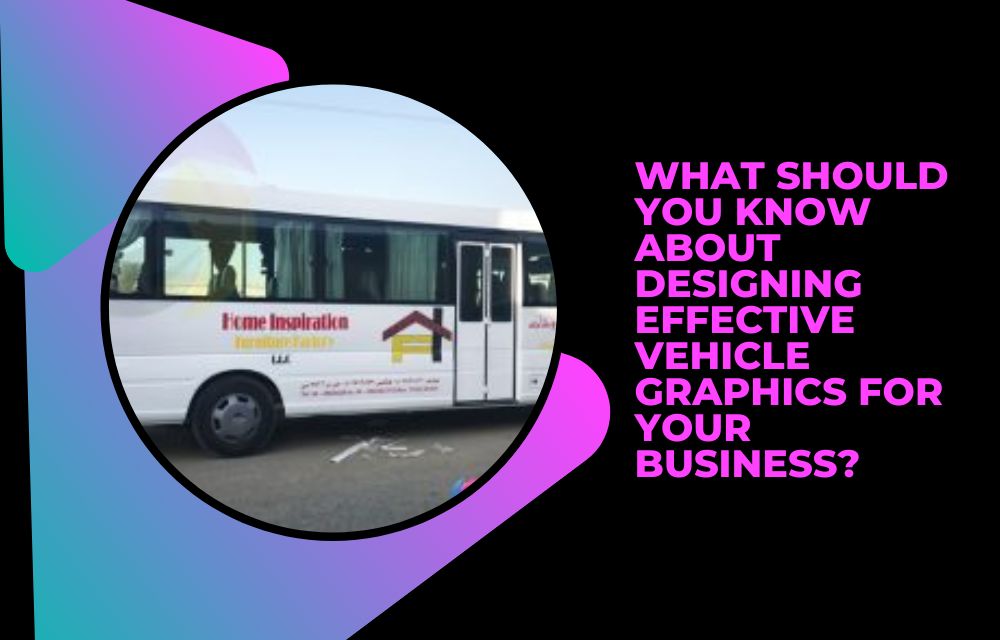Vehicle graphics are a powerful marketing tool, transforming ordinary vehicles into mobile billboards that can significantly increase your business’s visibility. Whether it’s a car, van, or a fleet of trucks, wrapping them with vibrant, eye-catching graphics can draw attention everywhere they go. This article will guide you through the essentials of designing effective vehicle graphics that resonate with viewers and reinforce your brand identity.
Understanding the Impact of Vehicle Graphics
Why Choose Vehicle Graphics?
Vehicle graphics provide a cost-effective, dynamic advertising method that can travel directly to your target audience, wherever they are. Unlike stationary billboards or digital ads that can be skipped or ignored, vehicle graphics are hard to miss and can generate thousands of visual impressions daily.
Note:- Turn your vehicle into a mobile advertisement with amazing graphics! Creative Digital provides high-quality vehicle graphics in uae that capture attention and increase brand recognition. Contact us today to make your vehicle stand out!
The Benefits of Vehicle Graphics
- Wide Reach: Your advertisement moves wherever your vehicle goes, reaching a diverse audience across different locations.
- Brand Reinforcement: Consistently seeing your branded vehicles helps increase brand recognition and trust.
- Cost-Effectiveness: After the initial investment, vehicle graphics continue to advertise your business without ongoing costs.
Principles for Designing Vehicle Graphics
1. Clarity and Simplicity
Keep It Simple
The design of your vehicle graphic should be straightforward and focused. A clear, concise message is crucial because it will be viewed briefly, often while the vehicle is in motion.
Avoid Overcrowding
Resist the urge to fill every inch of space with information. A cluttered design can be overwhelming and difficult to read from a distance.
2. Visibility and Readability
Bold Fonts and Bright Colors
Use large, bold fonts and bright colors to make your graphics stand out. This enhances readability and ensures that your message is clear even from afar.
Contrast Is Key
High contrast between the text and the background enhances visibility. For example, dark text on a light background or vice versa can make your message pop.
3. Consistent Branding
Incorporate Your Logo and Brand Colors
Your vehicle graphics should reflect your brand’s identity. Include your logo and use your brand’s color scheme to strengthen brand recognition and ensure consistency across all marketing materials.
Reflect Your Brand’s Style
The design should align with the overall style and tone of your brand. Whether it’s professional and straightforward or fun and vibrant, the graphics should feel like a natural extension of your brand.
4. Strategic Use of Space
Design for the Vehicle
Consider the size and shape of the vehicle in your design. Tailor your graphics to fit the unique contours and spaces, ensuring that key elements like logos and contact information are prominently displayed and unobstructed by doors, windows, or curves.
Placement Matters
Place important information in high visibility areas. Typically, the rear and sides of the vehicle are the most visible to other drivers and pedestrians.
5. Include a Call to Action
Encourage Interaction
A clear call to action (CTA) such as “Call Now,” “Visit Our Website,” or “Follow Us on Social Media” can motivate people to interact with your business. Make sure your CTA is bold and easy to read, with contact information displayed nearby.
Steps to Designing Your Vehicle Graphics

1. Define Your Objectives
Start by defining what you want to achieve with your vehicle graphics. Are you looking to increase brand awareness, promote a new product, or provide contact information? Your objectives will guide the design process.
2. Work with Professionals
Consider hiring a professional designer who has experience in vehicle graphics. They can provide valuable insights and ensure that your design is both effective and optimized for production and application.
3. Mock-Up Your Design
Before finalizing the design, create a mock-up on a scale model of your vehicle or use graphic design software to visualize how the graphics will look. This step can help you make adjustments before the graphics are printed and applied.
4. Choose the Right Materials
Select high-quality materials that are durable, weather-resistant, and capable of holding vibrant colors. Quality materials ensure your graphics withstand the elements and remain eye-catching for years.
5. Plan for Application and Maintenance
Work with a professional installer to ensure that your graphics are applied smoothly and last as long as possible. Also, understand how to properly maintain your graphics to keep them looking their best over time.
Common Mistakes to Avoid
Overcomplicating the Design
Simplicity is the key to effective vehicle graphics. Avoid using too many images, colors, or text styles, as this can make your message unclear.
Neglecting the Audience
Always consider your target audience. Design your graphics to appeal to the customers you want to attract.
Forgetting Legal Requirements
Ensure that your vehicle graphics do not obstruct the driver’s view and comply with any local regulations regarding vehicle signage.
Conclusion
Designing effective vehicle graphics is a fantastic opportunity to turn your business vehicles into powerful marketing assets. By focusing on clarity, visibility, branding, and strategic design, you can create impactful graphics that enhance your brand’s presence on the roads. Remember to keep the design simple, ensure readability, and align it with your brand identity for the best results. With thoughtful design and proper maintenance, your vehicle graphics will serve as a moving advertisement, catching eyes and driving business for years to come.
Note:- To read more articles visit on writefortourism.

